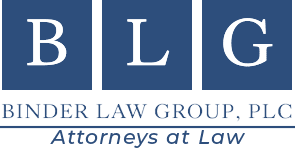Your Legal Rights After a Lyft Accident: Insights for San Fernando Valley Residents
Ridesharing services like Lyft have transformed the way we travel, providing convenience and accessibility. However, with the increase in rideshare usage comes a rise in accidents involving these vehicles. For residents of the San Fernando Valley, understanding your legal rights after a Lyft accident is crucial. This article delves into common causes of these accidents, who may be held responsible, essential steps to take post-accident, how companies manage claims, and what victims need to know about seeking compensation.
Common Causes of Lyft Accidents
Lyft accidents can occur due to various factors that are often similar to those seen in traditional vehicle collisions. Some prevalent causes include:
-
Distracted Driving: This is one of the leading causes of accidents involving rideshare drivers. Whether it’s checking their phone for navigation or responding to messages from passengers or dispatchers, distractions can lead to severe consequences.
-
Speeding and Reckless Driving: Drivers may feel pressured to complete rides quickly or earn more money by accepting multiple requests in a short period. This pressure can result in speeding and aggressive maneuvers that increase the likelihood of an accident.
-
Driving Under the Influence: While rideshare services aim to provide safe transportation options, instances where drivers are under the influence of drugs or alcohol can still occur.
-
Poor Vehicle Maintenance: Rideshare vehicles must be maintained properly; however, some drivers might neglect necessary repairs or routine maintenance checks that could prevent mechanical failures leading to accidents.
Who Is Typically Responsible?
Determining liability in a Lyft accident can be complex due to various parties potentially being at fault:
-
The Driver: If the driver was negligent—such as driving recklessly or failing to follow traffic laws—they may be held liable for any damages resulting from an accident.
-
Lyft as a Company: In certain circumstances, Lyft itself may bear responsibility if it can be shown that they failed to properly vet their drivers or maintain safety standards within their app’s operation.
-
Other Drivers: Sometimes other motorists involved in an accident may share liability if their actions contributed directly to the collision.
Understanding who is responsible is vital for victims seeking compensation for injuries sustained during an accident.
Steps to Take After an Accident
If you find yourself involved in a Lyft accident, following specific steps can help protect your rights:
-
Ensure Safety First: Check yourself and others for injuries. If anyone requires medical attention, call 911 immediately.
-
Document the Scene: Gather evidence by taking photographs of all vehicles involved, any visible injuries, road conditions, and relevant traffic signs or signals.
-
Exchange Information: Collect contact information from all parties involved—including other drivers and witnesses—as well as insurance details.
-
Report the Incident: Notify local law enforcement about the incident so they can create an official report; this will be important later when filing claims.
-
Contact Lyft Support: Report the incident through the Lyft app as soon as possible while ensuring you document your communication with them regarding your ride details and any subsequent claims process.
-
Seek Medical Attention: Even if you feel fine initially, some injuries manifest later on; therefore, it’s wise to get checked by a healthcare professional promptly after an accident.
How Companies Handle Accident Claims
After reporting an accident through its platform, Lyft will typically initiate its claims process which involves several steps:
-
Investigation Process: Lyft conducts its investigation into each reported incident which includes reviewing driver behavior before and during the ride along with passenger accounts.
-
Insurance Coverage Assessment: The outcome often hinges on whether the driver was logged into the app (and thus covered by Lyft’s insurance) at the time of the incident or not.
-
If they were actively transporting passengers or en route to pick up someone when an accident occurred, liability coverage usually applies.
- Conversely, if they were offline at that moment (not engaged with passengers), personal auto insurance would come into play instead.
What Victims Should Know About Seeking Compensation
Victims of rideshare accidents should understand key aspects related to pursuing compensation:
-
Types of Compensation Available:
Victims may seek compensation for medical expenses related to injuries incurred during an accident—this includes hospital bills, rehabilitation costs—and lost wages due to inability to work following their injury. -
Statute of Limitations:
California has specific time limits within which personal injury claims must be filed—typically two years from when you discover your injury—but it’s advisable not to delay initiating your claim process too long after an incident occurs. -
Consulting Legal Experts:
Engaging with legal professionals experienced in handling rideshare-related cases can provide clarity on navigating complex insurance policies and negotiating settlements effectively while ensuring your rights are protected throughout every step of this challenging journey.
In summary, understanding your legal rights following a Lyft accident is essential for residents in San Fernando Valley navigating potential aftermaths involving personal injury claims and liability determinations. By being informed about common causes of such incidents and knowing how best to respond afterward empowers individuals towards making educated decisions regarding their safety and financial recovery options moving forward.











